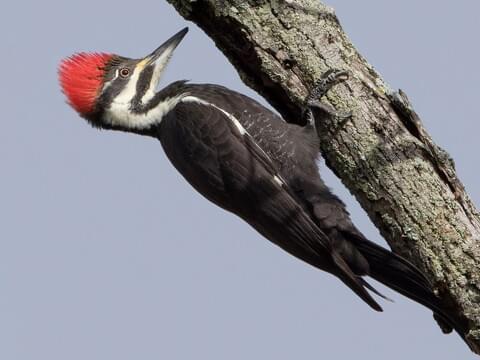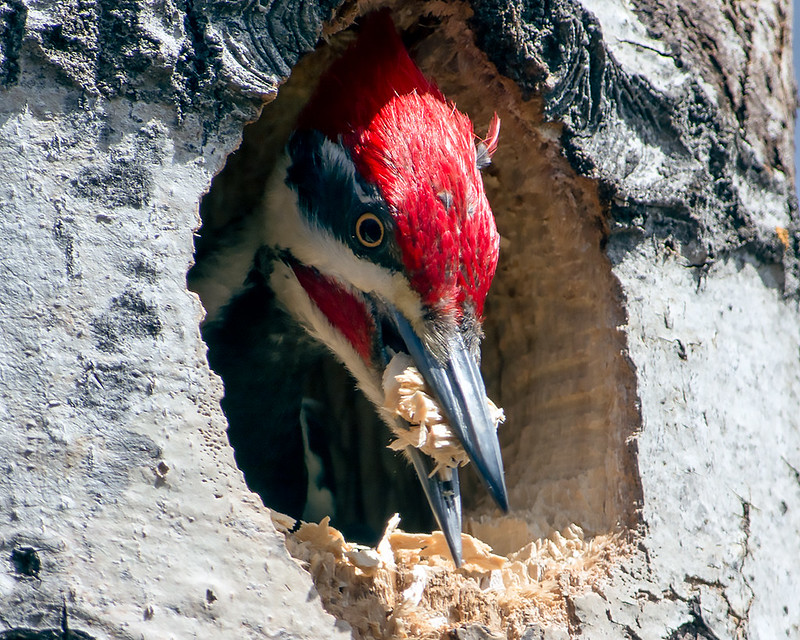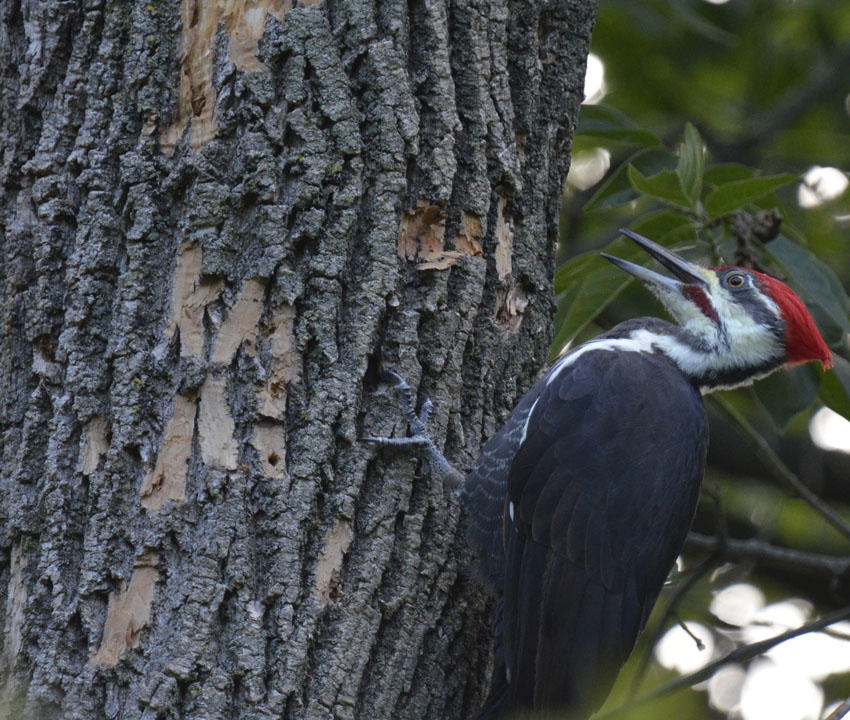A Drumbeat in the Trees
The rhythmic drumming of the pileated woodpecker is one of the most powerful and evocative sounds in the North American forest. Larger than a crow, with black wings, a flaming red crest, and a sharp, chisel-like beak, this bird is hard to miss — yet surprisingly elusive. You’re more likely to hear its echoing calls or the hollow tapping on a decaying tree than see it up close. Its hammering resonates like ancient percussion in the forest, a sound that speaks to both the primal and the wild. These birds aren’t just pecking randomly — each blow is purposeful, whether to excavate a nest, locate grubs deep in wood, or communicate across territory. Their very presence is a sign of mature, rich woodland, where decay and life coexist in ecological harmony.

The Origin of the Name
The name 'pileated' comes from the Latin *pileatus*, meaning 'capped', referring to the woodpecker’s prominent red crest. It’s pronounced either /ˈpɪliˌeɪtɪd/ or /ˈpaɪliˌeɪtɪd/, depending on region and preference. This name emphasizes the striking head plumage, which gives the bird a regal, almost prehistoric appearance. In fact, some people liken the pileated woodpecker to a small pterosaur flitting through the trees. It’s a fitting name for a bird that feels like a throwback to an older, wilder era — bold, flamboyant, and carved straight from timberland legend.

Anatomy and Adaptation
The pileated woodpecker (*Dryocopus pileatus*) is the largest woodpecker species native to North America, measuring 16 to 19 inches (40–49 cm) long with a wingspan of up to 30 inches (76 cm). Their plumage is primarily black with bold white stripes down the neck and underwings. Males sport a red crest and red stripe along the cheek, while females lack the cheek stripe. Their powerful bills are used as woodcutting tools, specially adapted with a reinforced skull structure and shock-absorbing tissues to prevent brain injury. With each strike, they send vibrations into trees, using acoustic feedback to find carpenter ants, beetle larvae, and other hidden insects. Their long, barbed tongues can extend over 4 inches — perfect for extracting prey from deep crevices.

Territory and Nesting Behavior
These woodpeckers are primarily monogamous and territorial, often defending large areas of mature forest. During the breeding season, both sexes take part in the excavation of a nesting cavity, usually high up in a dead or dying tree. These cavities are often spacious and oval-shaped, unlike the rounder holes made by smaller woodpeckers. A pair may reuse their territory for years, but they typically dig a new nest each season — leaving behind homes for owls, bats, or squirrels. Once hatched, chicks are fed by regurgitated insects and remain in the nest for about a month. Even outside of the breeding season, pairs may remain bonded, foraging and roosting within the same range.

Ecological Role and Forest Impact
The ecological contributions of pileated woodpeckers are immense. Their powerful excavation work creates cavities that become essential nesting and roosting sites for a variety of species, from chickadees and swifts to raccoons and pine martens. Their foraging also helps control wood-boring insects that can otherwise damage tree health. As 'keystone excavators,' they play a pivotal role in forest ecosystems, especially in older woodlands where natural tree decay provides their preferred conditions. Their feeding and nesting behavior leaves visual signatures — large, rectangular holes in trees, shredded bark, and clean-edged cavities — marking their presence and influence on the landscape.

Human Connection and Cultural Presence
The pileated woodpecker has captured the human imagination in subtle ways. It’s believed to be one of the inspirations for the classic cartoon character Woody Woodpecker, and in some Indigenous North American traditions, the red-crested bird is seen as a spiritual messenger. To many birdwatchers, spotting a pileated is a thrilling experience — a flash of red, a burst of sound, and then silence as it disappears behind the trees. Unlike more urban-adapted birds, pileated woodpeckers remain loyal to the wild, found mostly in deep woods, national parks, and old-growth forests. Their increasing sightings in suburban woodlots, however, signal a fascinating adaptability, and also a hopeful sign that conservation efforts are paying off.

Conclusion: A Vanishing Sound?
Despite their growing population, pileated woodpeckers remain vulnerable to habitat loss. As logging, development, and climate change alter the structure of North American forests, the availability of large snags and decaying trees is threatened. While not endangered, their dependence on deadwood habitats puts them at risk in landscapes that favor tidy, trimmed forests over wild, aging ones. Their haunting calls and forest drumming remain symbols of a more natural world — one that must be consciously preserved. When we protect the habitats of pileated woodpeckers, we’re also preserving an entire community of forest life that depends on their ecological craftsmanship.
